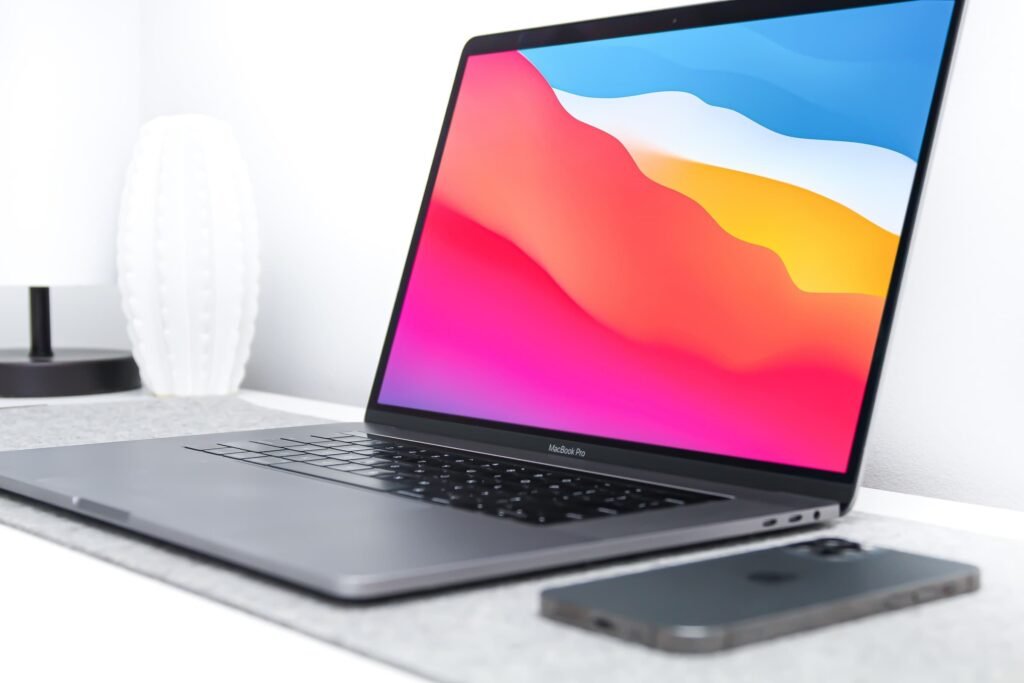MacBooks are powerful machines, but they can generate significant heat during intensive tasks. Here’s how to manage and prevent overheating issues to keep your MacBook running smoothly.

1. Check Ventilation and Airflow
Issue: Blocked vents or inadequate airflow causing overheating.
Solution:
- Elevate Your MacBook: Use a laptop stand or cooling pad to improve airflow underneath your MacBook.
- Clean Vents: Periodically clean dust and debris from vents using compressed air to ensure optimal airflow.
2. Monitor CPU Usage
Issue: High CPU usage leading to increased heat production.
Solution:
- Use Activity Monitor: Open Applications > Utilities > Activity Monitor. Identify apps consuming high CPU resources and close unnecessary processes.
3. Manage Background Processes
Issue: Background apps and tasks contributing to heat buildup.
Solution:
- Close Unused Apps: Quit apps not in use to reduce CPU load and heat generation.
- Disable Startup Items: Review login items in System Preferences > Users & Groups > Login Items. Remove unnecessary apps set to launch at startup.
4. Update macOS and Apps
Issue: Outdated software causing inefficiencies and overheating.
Solution:
- Install Updates: Go to Apple menu > System Preferences > Software Update. Keep macOS and apps up to date to benefit from performance improvements and bug fixes.
5. Use Safari for Web Browsing
Issue: Web browsers like Chrome can be resource-intensive.
Solution:
- Opt for Safari: Use Safari for browsing to minimize CPU usage and reduce heat output compared to Chrome or Firefox.
6. Check Energy Saver Settings
Issue: High energy settings may contribute to increased heat.
Solution:
- Adjust Energy Saver: Go to Apple menu > System Preferences > Energy Saver. Optimize settings for better power management and lower heat generation.
7. Keep MacBook Cool
Issue: Environmental factors impacting MacBook temperature.
Solution:
- Avoid Direct Sunlight: Keep your MacBook out of direct sunlight and hot environments.
- Use in Cool Spaces: Work in well-ventilated areas with room temperature ideally between 50-95°F (10-35°C).
8. Use External Cooling Solutions
Issue: Intensive tasks or high ambient temperatures.
Solution:
- Cooling Pads: Invest in a laptop cooling pad with fans to enhance airflow and dissipate heat efficiently.
- Elevate and Airflow: Place your MacBook on a hard, flat surface to allow airflow and prevent heat buildup.
9. Reset SMC (System Management Controller)
Issue: System settings affecting thermal management.
Solution:
- Reset SMC: Shut down your MacBook. Hold down Shift + Control + Option + Power button for 10 seconds. Release all keys, then press the Power button to start your MacBook.
10. Visit an Authorized Service Provider
Issue: Persistent overheating despite troubleshooting steps.
Solution:
- Professional Assessment: Contact Apple Support or visit an authorized service provider for diagnosis and repair of potential hardware-related issues causing overheating.
By implementing these tips, you can effectively manage overheating issues on your MacBook, ensuring optimal performance and prolonging the lifespan of your device. Regular maintenance and monitoring of temperature levels are key to keeping your MacBook cool and functional during intensive tasks.







